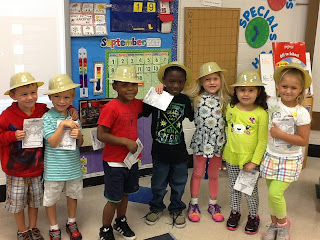Somebody once told me that in fashion everything comes back around. That somebody was my Aunt Karen, better known as Karkar.
Side note: I am not sure why the entire family allowed me to name everybody just because I was the first child, grandchild, and niece. I also do not know why these names were kept, even into my adulthood. My family members currently have names like Old Gramma, New Gramma, Papa Bert and Grandma Ernie (Can you see the Sesame Street undertones?). To this day I am not that great at naming things. I have a black named Black Cat and a white cat named White Cat. I also have a brown chihuahua, did you guess it? Donatella Versace.

Speaking of fashionistas, let me get back to what my aunt told me one day when she was cleaning out her closet. She told me that she wasn't going to get rid of her colorful Bill Cosby-ish sweaters because they will be stylish again... Along with the other 7 closets full of clothes. I secretly laughed on the inside because who would wear those wild colors and bold patterns?? Ha! I am anticipating their comeback this winter! Have you seen some of the neon 80s fashion out there lately? Whew! I never thought I would see some of that stuff again, and guess what... it's RAD! Wait, that maybe hasn't come back around...
As scary as those sweaters can be, the same can be true for education, sort of. Now this doesn't mean get out your jelly shoes and start rocking the side ponytail, or that teachers should start digging out holiday sweatshirts and thematic vests.... What I mean is that some of that "good" teaching that I remember as a student in school and those "crazy" things my college professors told me to do can be used today.
Many teachers fear the "change" to Common Core State Standards. Those standards are asking students to shift their way of thinking, so as teachers, we will have to shift our way of thinking too. After examining the standards, I am finding that some of the "old school" ways of teaching really were not that bad. For example, last year I spent a considerable amount of time working on close reads for my classroom. During a professional development I was reminded of the QAR strategy and I thought, "Wait a minute, I remember cramming those letters in my brain for a test in college!" I went back to my room and started to try and recall what I had learned. Couldn't remember, so I googled it. Guess what? It is VERY SIMILAR to the idea of close reads! See! It's just like fashion! It comes back around!
Again, as teachers, we do not have to breathe in chalk dust and teach the dewey decimal system, but there is something to be said about how I was taught "all them years ago." (said with a country accent and followed by "up hill both ways")
I am not that old, 33 to be exact, but I have vivid memories of teachers acting more as a guide and more responsibility being put on the student. Let there be no mistake. I
did have to do worksheets of math facts. I
did copy definitions out of dictionaries. I
did have phonics lessons that were drill and practice, but it seems like once my foundational skills were built that the learning was handed over to me. I think this is the change we need with CCSS (minus worksheets and dictionary copying). Students should be given a foundation of skills and then presented with real life "problems" and measured on how they apply the skills they were taught. As for struggling learners, teachers are there to guide them.
I say this ALL the time... Give a man a fish and he is full for a day. Teach a man to fish, and he can eat for a lifetime. Same is true for students.
The moral of the story is this, Common Core State Standards are not that big of a change from what is good practice for students. Yes, there will be some adjustment in ways of doing things, but at the end of the day teachers must prepare students who will be able to thrive in a fast-paced global society (fishermen).
PS - Keep those skinny jeans! They will be back in fashion.





























